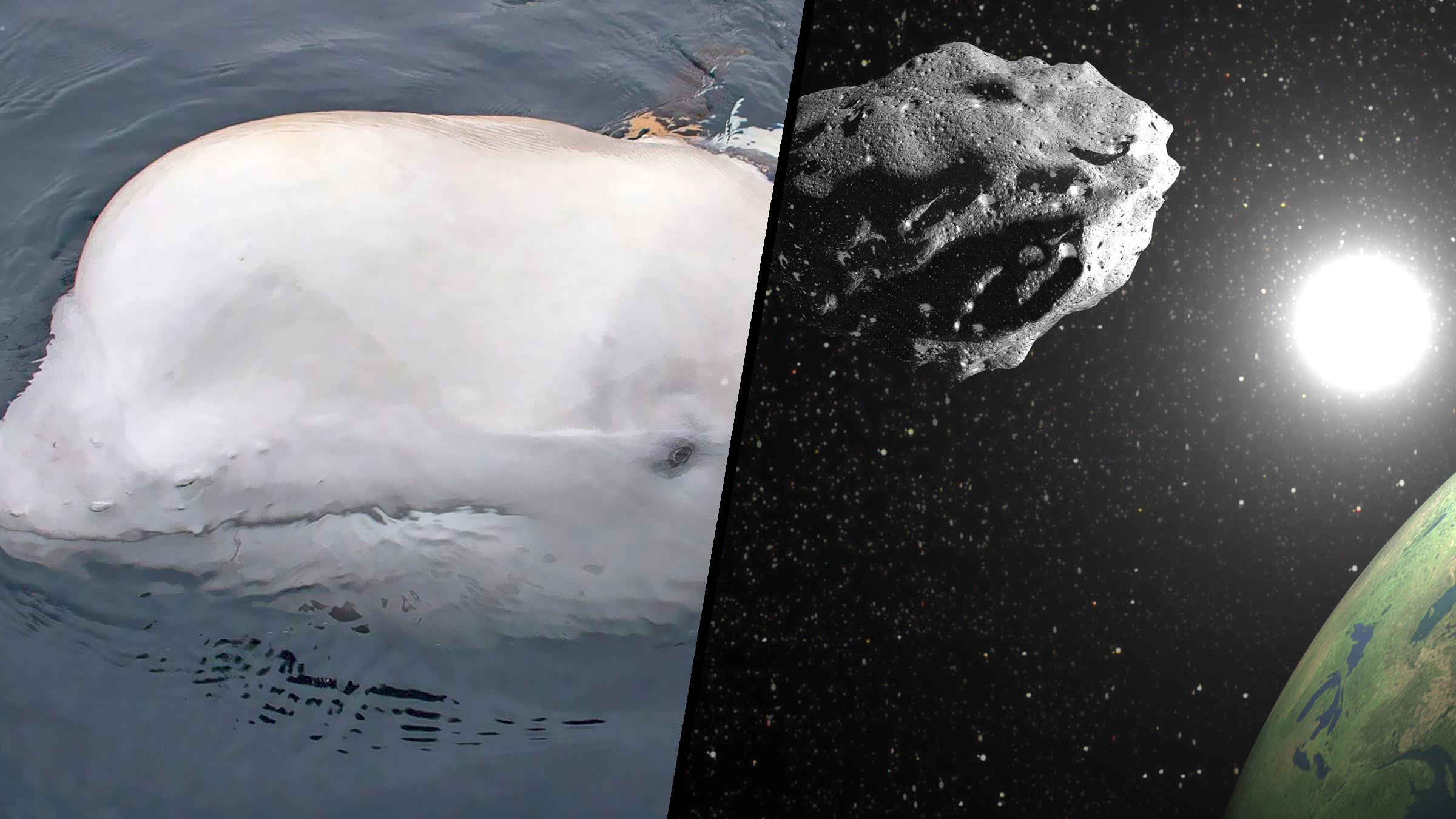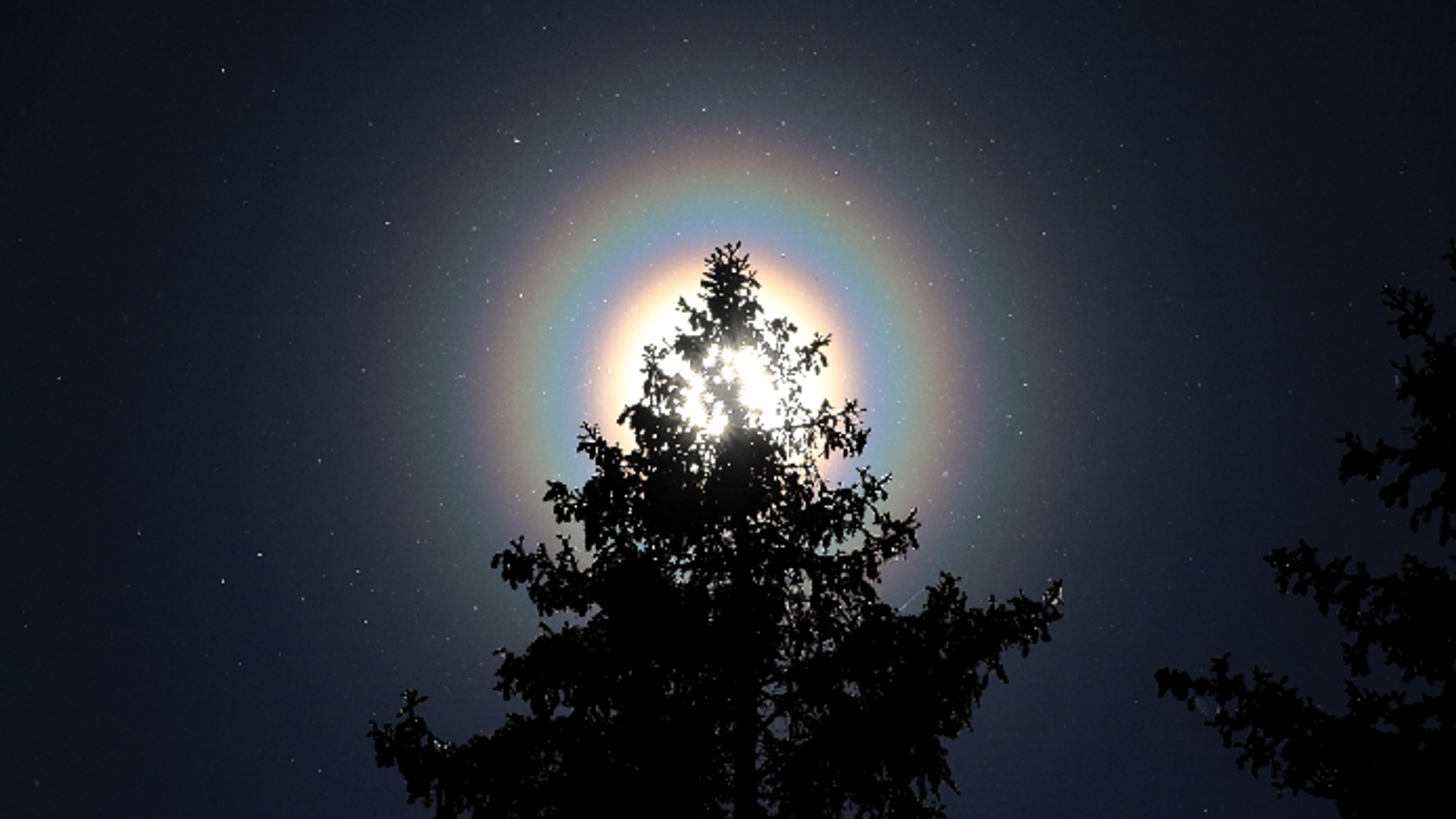Science news this week: A quasi-moon and a lonely spy whale
June 3, 2023: Our weekly roundup of the latest science in the news over the past few days, as well as a few fascinating articles to keep you entertained over the weekend.

Space is as vast as it is mysterious, so perhaps it’s not surprising that we’ve overlooked alien star system debris floating around in our planet’s orbit, but what about a "quasi-moon" that has been circling Earth since 100 B.C.? How did that slip through the net? Perhaps we were too busy looking for aliens saying hello.
Back on terra firma, archaeologists in South Africa found 153,000-year-old footprints that are the oldest Homo sapiens tracks on record — a discovery that left the team who found them "pleasantly astonished." Another pleasantly astonishing find was the collection of 2,700-year-old petroglyphs depicting people, ships and animals discovered in Sweden.
Sadly, researchers made a far more chilling discovery when they unearthed a "horror bunker" near the city of Anda in northeast China holding secrets that are too barbaric to contemplate. This bunker is believed to be the largest test site of imperial Japan's infamous Unit 731, which conducted horrifying human experiments during the 1940s. The researchers said the bunker "highlights the ongoing legacy of Unit 731's atrocities and their impact on global efforts to prevent biological warfare."
On the other side of the North Pacific, a man in Arizona was stung over 250 times by "killer" bees. They stung his eyes, mouth, ears, legs and back in a swarm attack. He survived and is now recovering at home — but how many bee stings does it take to kill?
Also in the U.S., more teens with obesity are now getting weight-loss surgery to manage the condition. Researchers found the rate of surgery increased 19% between 2020 and 2021, with study authors saying they are cautiously optimistic that barriers to metabolic and bariatric surgeries are decreasing.
Finally, spare a thought for the suspected Russian spy whale known as Hvaldimir, who was recently spotted in waters off the coast of Sweden. Given his age and behavior, he was probably looking for a mate. Sadly for him, beluga whales only live in the high Arctic in areas such as Norway's Svalbard archipelago, Greenland, Canada and Russia.
Picture of the week

When Finnish photographer Mikko Peussa captured this beautiful image of rainbow-colored rings surrounding the sun, he could hardly have imagined the surprising source of this stunning effect — tree pollen.
Get the world’s most fascinating discoveries delivered straight to your inbox.
The effect is created by sunlight scattering, or separating into its individual wavelengths, when it hits the pollen's surface. Pollen coronas only appear when pollen concentrations are very high and can only be clearly seen when the sun or the full moon is partially obscured.
Weekend reading
- Crabs are so awesome that animals keep evolving into them — but why?
- Here’s everything you need to know about the "Strawberry Moon," which you can see in the sky tonight.
- If you’re looking for something a little more evergreen, these are the world’s oldest trees.
- Which civilization lasted the longest? It turns out, that's not a straightforward question.
- Scientists keep resurrecting ancient viruses trapped in permafrost and frozen remains.
- The Tunguska event was the biggest asteroid impact in recorded history. So how did it vanish without a trace?
And finally…
Once upon a time — at least according to the ancient Greek writer Plutarch — the hero Theseus sailed from Athens, Greece, to the island of Crete, where he slayed the half-man, half-bull Minotaur before sailing back to rule Athens.
The wooden ship that Theseus sailed on, Plutarch imagined, must have become a national treasure, and he posed a thought experiment that has fascinated philosophers ever since: If you repaired Theseus' ship plank by plank so that no original planks remained, is it still the same ship?

Alexander McNamara is the Editor-in-Chief at Live Science, and has more than 15 years’ experience in publishing at digital titles. In 2024 he was shortlisted for Editor of the Year at the Association of British Science Writers awards for his work at Live Science. He has previously worked at New Scientist and BBC Science Focus.


